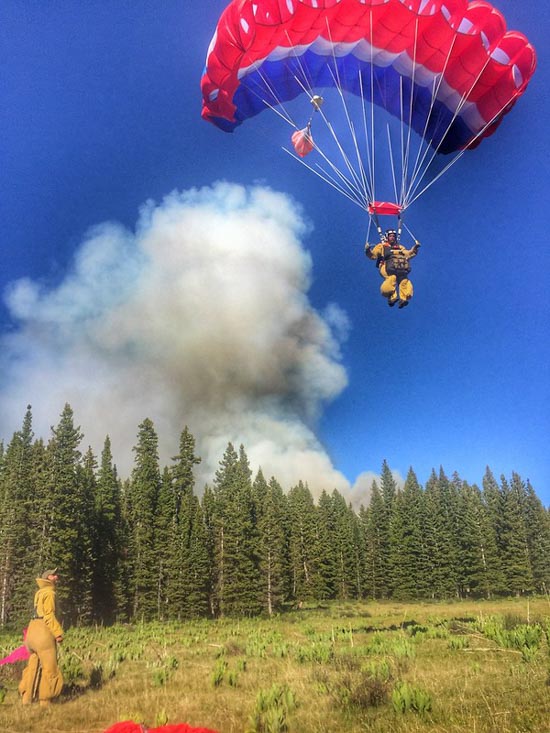
A bill introduced in the Senate to help Americans and businesses deal with the effects of the COVID-19 pandemic contained language to beef up the budget of the U.S. Forest Service (FS), but it failed to pass Sunday [UPDATE: and during a second attempt on Monday]. The $1.8 trillion bill included $71 million, or 0.004 percent of the total, for the FS to address the crisis. The funds were intended for personal protective equipment, health testing for first responders, cleaning, maintenance, and disinfecting but were to be “allocated at the discretion of the Chief of the Forest Service”, to “prevent, prepare for, and respond to coronavirus.”
The legislation appears to have been hurriedly drafted, probably within the last few days. I was not able to find any specific funding in the bill for the four agencies in the Department of the Interior that have wildfire responsibilities. If it had been written in January, a month after the outbreak began, there would have been more time to put together a comprehensive budget for all five firefighting agencies that would appropriate a substantial amount for directly increasing the ability to fight fires.
It is likely that the number of firefighters available to respond to wildfires through next year will be decreased as 20-person crews or 5-person engines have to be quarantined when one crew member tests positive for the virus or if they are exposed while fighting a fire.
Under these conditions, it will be difficult to use 100 percent of the usual capacity of the firefighting agencies. If more firefighters were hired it could make it possible to have healthy forces in reserve. It could also enhance the ability to attack new fires with overwhelming force.
Since firefighters assembling in groups to suppress a fire can put them at risk of spreading COVID-19, we need to rethink our tactics. This could include making far greater use of aerial firefighting. It should become standard operating procedure to have multiple large air tankers and helicopters safely and quickly attacking a new fire from the air, far from anyone on the ground infected with the virus.
The fewer large fires we have that require hundreds or thousands of firefighters to work together, the safer firefighters will be from additional virus exposure. Attacking new fires with overwhelming force would also reduce evacuations that can result in refugees assembling in large numbers. An infected person forced to leave their self-quarantine to fend around for housing during an emergency is a danger to society.
In order to better protect our homeland from wildfires during the pandemic the amount of additional funds appropriated for the five firefighting agencies in this bill needs to be increased by a factor of 10 or 20. Instead of 13 or 18 large air tankers on exclusive use contracts there should be 40, and the Type 1 helicopter numbers should increase from 28 to 50. The fleets of smaller air tankers and helicopters also need to be beefed up.
Having said that, air tankers don’t put out fires, but under ideal conditions they can slow the spread which allows firefighters on the ground the opportunity to move in and suppress the fire in that area.
If we expect to maintain the ability to fight wildfires, every firefighter must be tested on a regular basis. This can greatly reduce the risk when they gather in large numbers to suppress a fire.
Other key members of the wildland firefighting community must also be tested in order to maintain the viability of the system. This would include pilots, aircraft mechanics, air tanker base crews, helitack crews, dispatchers, members of Incident Management Teams, and contractors that supply firefighting equipment and services, especially caterers.
Safely fighting a wildfire during a pandemic this year and possibly next, is going to incredibly difficult. I am not sure if it can be done safely even if everyone involved has been tested for the virus and squadrons of air tankers and helicopters are used to the max in numbers not previously seen.
